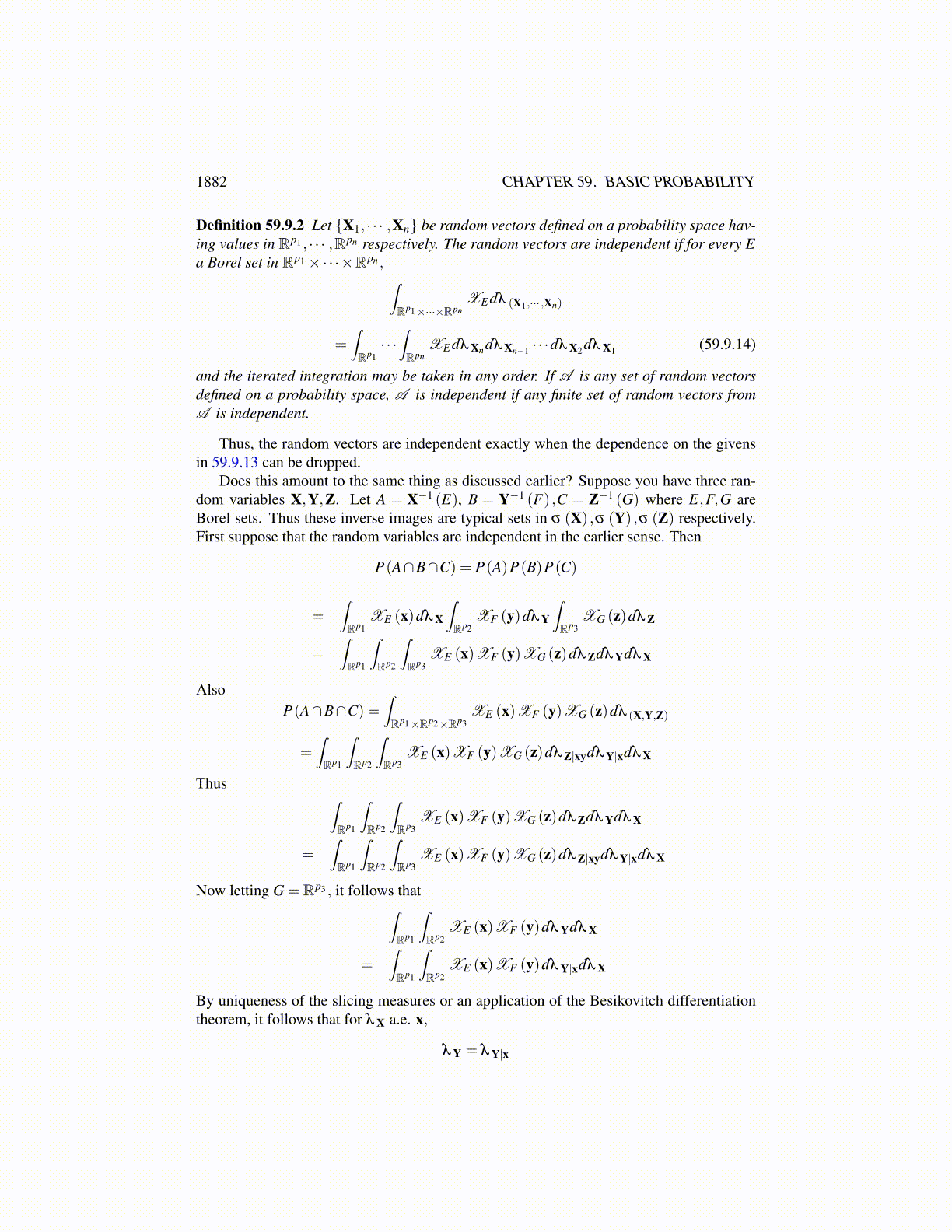
1882 CHAPTER 59. BASIC PROBABILITY
59.8 The Characteristic FunctionOne of the most important tools in probability is the characteristic function. To begin with,assume the random variables have values in Rp.
Definition 59.8.1 Let X be a random variable as above. The characteristic function is
φ X (t)≡ E(eit·X)≡ ∫
Ω
eit·X(ω)dP =∫Rp
eit·xdλ X
the last equation holding by Proposition 59.1.12.
Recall the following fundamental lemma and definition, Lemma 32.3.4 on Page 1101.
Definition 59.8.2 For T ∈ G ∗, define FT,F−1T ∈ G ∗ by
FT (φ)≡ T (Fφ) , F−1T (φ)≡ T(F−1
φ)
Lemma 59.8.3 F and F−1 are both one to one, onto, and are inverses of each other.
The main result on characteristic functions is the following.
Theorem 59.8.4 Let X and Y be random vectors with values in Rp and suppose E(eit·X)
= E(eit·Y) for all t ∈ Rp. Then λ X = λ Y.
Proof: For ψ ∈ G , let λ X (ψ) ≡∫Rp ψdλ X and λ Y (ψ) ≡
∫Rp ψdλ Y . Thus both λ X
and λ Y are in G ∗. Then letting ψ ∈ G and using Fubini’s theorem,∫Rp
∫Rp
eit·yψ (t)dtdλ Y =
∫Rp
∫Rp
eit·ydλ Yψ (t)dt
=∫Rp
E(eit·Y)
ψ (t)dt
=∫Rp
E(eit·X)
ψ (t)dt
=∫Rp
∫Rp
eit·xdλ Xψ (t)dt
=∫Rp
∫Rp
eit·xψ (t)dtdλ X.
Thus λ Y(F−1ψ
)= λ X
(F−1ψ
). Since ψ ∈ G is arbitrary and F−1 is onto, this implies λ X
= λ Y in G ∗. But G is dense in C0 (Rp) from the Stone Weierstrass theorem and so λ X = λ Yas measures. Recall from real analysis the dual space of C0 (Rn) is the space of complexmeasures.
Alternatively, the above shows that since F−1 is onto, for all ψ ∈ G ,∫Rp
ψdλ Y =∫Rp
ψdλ X
and then, by a use of the Stone Weierstrass theorem, the above will hold for all ψ ∈Cc (Rn)and now, by the Riesz representation theorem for positive linear functionals, the two mea-sures are equal.
You can also give a version of this theorem in which reference is made only to theprobability distribution measures.